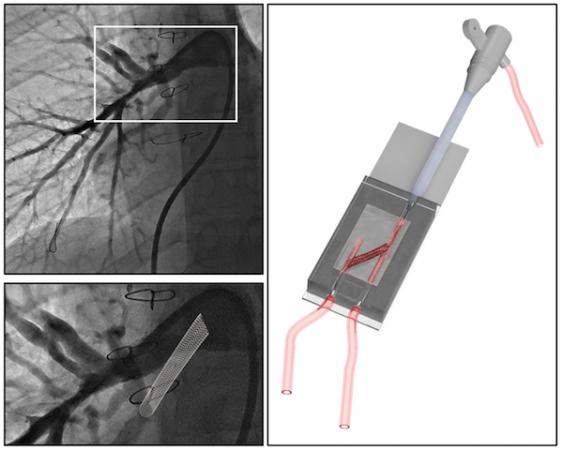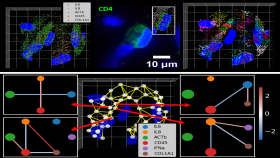Here’s an example (pictured) of how 3D printing can be applied to pediatric cardiology. It’s also an example of how Georgia Tech, Emory and Children’s Healthcare of Atlanta all work together.
Biomedical engineers used a modified form of gelatin to create a model of pulmonary arteries in newborn and adolescent patients with a complex (and serious) congenital heart defect: tetralogy of Fallot with pulmonary atresia. The model allowed the researchers to simulate surgical catheter-based intervention in vitro.
The results were recently published in Journal of the American Heart Association. Vahid Serpooshan, assistant professor in the Wallace H. Coulter Department of Biomedical Engineering at Emory University and Georgia Tech, and his lab collaborated with Sibley Heart Center pediatric cardiologist Holly Bauser-Heaton; both are part of the Children’s Heart Research and Outcomes Center.
“This is a patient-specific platform, created with state-of-the-art 3D bioprinting technology, allowing us to optimize various interventions,” Serpooshan says.
Media Contact
Walter Rich
Keywords
Latest BME News
Commercialization program in Coulter BME announces project teams who will receive support to get their research to market.
Courses in the Wallace H. Coulter Department of Biomedical Engineering are being reformatted to incorporate AI and machine learning so students are prepared for a data-driven biotech sector.
Influenced by her mother's journey in engineering, Sriya Surapaneni hopes to inspire other young women in the field.
Coulter BME Professor Earns Tenure, Eyes Future of Innovation in Health and Medicine
The grant will fund the development of cutting-edge technology that could detect colorectal cancer through a simple breath test
The surgical support device landed Coulter BME its 4th consecutive win for the College of Engineering competition.
New research from Georgia Tech helps doctors predict how therapies will interact with a child's immune system, potentially improving outcomes and reducing risks.








